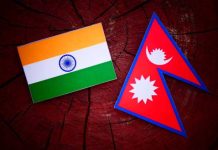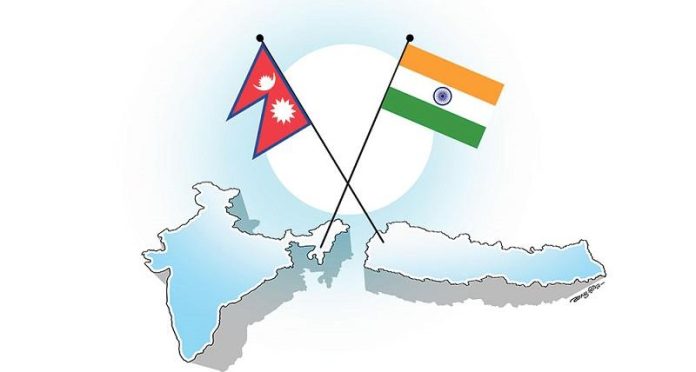Nepal and India have agreed to resume and expedite discussions through various mechanisms related to multipurpose projects, flood management, and irrigation, among others. After reaching an understanding to build five cross border transmission lines on Wednesday, both sides are now gearing up to address some key issues related to water resources, irrigation and flood management.
During a meeting between Energy Minister Dipak Khadka and his Indian counterpart, CR Patil in New Delhi on Thursday, both sides agreed to resume talks of various mechanisms related to the Pancheshwar Multipurpose Project, Saptakoshi High Dam Multipurpose Project and Sunkoshi Storage cum Diversion Scheme. Talks will also focus on flood and inundation issues, as well as irrigation, according to Nepali officials. Khadka was in New Delhi to participate in the “India Energy Week” organised by the Indian government.
To finalise the detailed project report of the Pancheshwar Multipurpose Project, both sides have agreed to convene the sixth meeting of the joint expert group (JEG) soon, Sandip Dev, joint secretary at Ministry of Energy, Water Resources and Irrigation, told the Post.
The term and mandate of the JEG has been extended until August, so by August-end, the sixth meeting is expected to take place, where both sides will give final touches to the DPR of the ambitious project, agreed between Nepal and India in 1996.
The Pancheshwar project is the centerpiece of the Mahakali Treaty signed between Nepal and India that aims to produce 6,480 megawatts of energy (to be shared equally between the two countries) and provide irrigation for 130,000 hectares of land in Nepal and 240,000 hectares in India, respectively. However, disputes over the finalisation of the DPR have left the project in limbo for decades. The JEG is mandated to finalise the DPR of the project. The last meeting of the JEG was held in Kathmandu in October, 2023.
Despite several high-level visits between Nepal and India, the DPR issue remains unresolved.
Nepal has been pushing for a 50-50 sharing of the water under the project, while India has been insisting on a 75-25 split in its favour. The date for the next JEG will be fixed through mutual consultation, according to Dev.
During their meeting, Minister Khadka and Patil also agreed to convene the meetings of the joint committee on inundation and flood management (JCIFM) and the joint commission on water resources (JCWR) soon. The 14th meeting of the JCIFM will be held on March 22-24 as agreed during Thursday’s meeting, said officials.
The JCWR is a secretary-level mechanism between Nepal and India that oversees all issues of water resources, irrigation, flood management, inundation, and river training, among others. Likewise, the JCIFM is a joint secretary-level mechanism that handles flood management issues. The last meetings of JCWR and JCIFM were held in 2022 September and March respectively.
Both ministers also discussed holding a meeting of the joint team of experts (JTE) of the Saptakoshi High Dam Multipurpose Project and Sunkoshi Storage cum Diversion Scheme. These multipurpose projects include several components like producing energy, high dam construction, irrigation and navigation facilities. The last 17th meeting of the JTE was held in Biratnagar in October, 2023.
Key issues under discussion include field investigations, the formulation of resettlement and rehabilitation plan for affected communities, environment impact assessment, and defining project parameters, among others. The JCWR should guide and instruct the JTE its mandate for the talks so the meeting of JCWR is important.
https://kathmandupost.com/national/2025/02/14/nepal-india-to-expedite-talks-on-stalled-big-projects








































